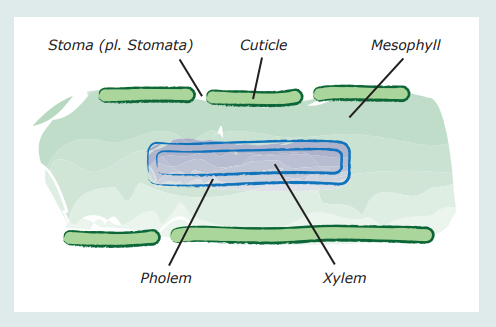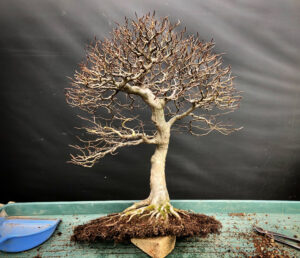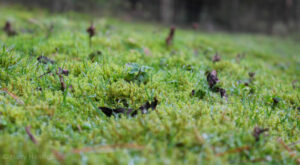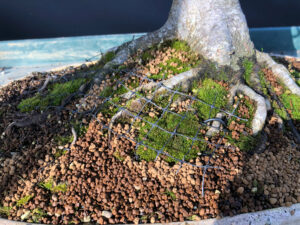Bonsai is a unique artform in that it combines not only creativity but also horticultural skill. However well designed a bonsai is, it must always have its horticultural needs met in order that it remains in good health and is able to cope with the stress of styling, wiring and life in the confines of a pot. However without understanding how plants function, it is harder to understand the necessity of applying sound horticultural practices.
Understanding basic plant physiology is also essential to understanding how bonsai techniques are used to alter the natural growth habit of plants and the effect that these techniques have on bonsai.
The three principal areas of any tree or shrub are the roots, the trunk and the leaves.
FUNCTIONS OF ROOTS
The root system of a bonsai is normally only considered at repotting time and for the rest of the year it remains out of view and often out of mind. its development though is as important to the health and growth of a bonsai as the rest of the plant.
The roots of any plant have three main purposes, the first is simply to anchor the plant into the ground or soil. This is performed by the thick, strong roots which radiate from the base of the trunk. The second purpose is to store nutrients during the dormant period (usually Winter).
Lastly, roots function to absorb water and nutrients via single cell growth extensions, called root-hairs. Water is then supplied to other parts of the plant via the Stele. Trees growing in dry soils or soils that during periods of drought, develop a tap root that travels into the ground until a continual source of moisture is found before developing fine roots that are able to ‘gather’ water and nutrients. Trees growing in wetter soils or trees that have a lower requirement of moisture (for instance many coniferous species) form a wide spreading fibrous root system in which there is no main or tap-root.
Roots grow through the hours of darkness, receiving energy that the plant has accumulated during daylight hours. In the daytime, root growth is very slow as the rootsystem supports growth in the above ground areas of the plant.
Root hairs and epidermal cells, absorb water and nutrients from the soil, and these are transported up the trunk to the leaves of the plant. However, a great deal of water (around 95%) is given up to the air as a result of a process commonly known as transpiration.
To give an idea of how much water is required by a typical tree growing in a forest, it has been estimated that Eucalyptus regnans growing at around 250 feet in height can lose several hundred gallons of water on a hot day. If the tree is to survive, this water must be replaced by its network of fine roots that will typically equal the size of the foliage that they support.
The rise of water in a plant body is caused by root pressure, capillary action, transpiration and cohesion. A tree of 100ft (or more) is only able to supply water to its uppermost branches because the tensile strength of water is very great; that is to say, an enclosed column of water will not break into separate droplets except under enormous tension.
Roots absorb water by a process known as osmosis, whereby water with a low concentration of minerals and nutrients passes through the root membrane, the ‘Endoderm’ towards the moisture within the rootsystem and the Stele which has a higher concentration of minerals and nutrients. It should be noted that if the water in the soil has a stronger solution of nutrients than the roots, usually as a result of overfeeding, water will be drawn from the roots back into the soil, depriving the tree of water. This process is known as reverse osmosis.
If the soil available to the roots of a plant is too dry, root hairs wither and are no longer able to absorb water and nutrients. Root hairs dry out rapidly when exposed to situations where there is no moisture and this why allowing the soil in which your bonsai grows to dry out, for however short a period of time, is very damaging.
Conversely, within compacted or poor-draining soils, roots suffocate and lose their absorbing capacity. For roots to grow well they require abundant amounts of oxygen in the form of aqueous vapour. If the soil is compacted and airless, atmospheric air is unable to penetrate the soil and the rootsystem can suffocate, leading to a dieback of roots, decay and root-rot.
Many plants are unable to make use of nitrogen in the air directly, but some bacteria, like mycorrhiza, make their way into the roots of living plants and fix nitrogen so that it is then made available to the plant. Mycorrhizal bacteria develops naturally in the soils of trees and can commonly be seen in the soils around Pines. Some tree species such as Pine, Juniper, Larch and Oak are especially reliant on mycorrhiza and for this reason, suffer very badly if bare-rooted or have a large percentage of their existing soil replaced at once.
FUNCTIONS OF THE TRUNK, BRANCHES AND SKIN
The trunk and branches of a tree perform four functions. The first is simply to support the weight of the foliage. Secondly they extend the spread or reach of the foliage mass into new areas of light, gaining maximum possible exposure to the sun as well helping the tree compete with its neighbouring tree for light.
Thirdly, along with the root system, the trunk and branches are able to store nutrients during both the growing season and during dormancy, enabling the tree to have energy reserves ready for when they are required.
Their last primary function is to provide a conduit for water and nutrients from one part of the tree to another.
Large amounts of water are transpired by a tree on a daily basis. Water is absorbed by the root system and is supplied to the leaves via the trunk and branch system. The vessels within the trunk up which the water travels is known as the xylem and this lies just below the cambium layer (the thin layer of green seen directly under the bark).
The xylem is formed by cells that elongate as they grow, these not only thicken their sides with lignin but ultimately break down their dividing walls where they meet tip-to-tip, so that together they form long continuous tubes through which water is able to enter.
That done, the cells die. The pipes that are created are then inert and dead but are also full of water. As the cells in a leaf lose water by evaporation, it is replaced by water from the top of the tubes and the whole water column is pulled upwards. This puts an enormous strain on the sides of the tubes within a tall tree, but their woody walls are rigid enough to withstand it.
Every season the xylem which contains the water vessels is replaced by a new layer, this annual replacement of the xylem creates the familiar growth rings by which a tree can be aged. The old xylem then becomes part of the heartwood of the tree. The heartwood is essentially dead ‘waste’ material, but it acts in a structural capacity for the tree, gradually widening year on year as the tree becomes taller.
The cambium layer lies outside the xylem and this is the most important part of a tree, responsible for controlling growth. It is a single cell layer just beneath the bark and appears green when the bark is scraped away in most woody plant species. The cambium layer is responsible for producing new roots and new shoots as well as tissue that heals over wounds.
Outside the cambium layer is the phloem, this is responsible for distributing the sugars produced in the leaves back down to other parts of the tree. This is also replaced every year and the build up of old phloem layers forms the thick corky bark that can be seen on old trees. The older the tree, the thicker the layer of bark or dead phloem is, the dead layers of old phloem are not very elastic and as the live areas of the trunk continue to expand, the bark starts to split into long fissures and plates.
FUNCTION OF LEAVES

Leaves are the place where the tree processes sugars in a process known as photosynthesis. Using light as a catalyst, water from the roots and carbon dioxide absorbed from the air, leaves produce sugars within the mesophyll cells. These sugars take the form of glucose (carbohydrates) which in turn provides growth energy to the plant.
Across the surface of a leaf (the Cuticle) are small pores called stomata which during daylight hours absorb the carbon dioxide necessary for the process of photosynthesis. At night, when light levels drop, the process of photosynthesis ceases and the stomata expel excess oxygen and other gaseous by-products.
During the day, carbohydrates produced by the process of photosynthesis are temporarily stored within the leaves themselves, but, at night, they are translocated via the phloem layer of the trunk and branches to areas of the tree where they are required for growth.
A second function of leaves is to allow water to evaporate through their surface in order to keep a constant flow of water throughout the whole tree. This flow of water allows the distribution of nutrients gathered from the soil by the root system throughout the entire tree.
Tree species have evolved a range of foliage types to allow them to cope with differing moisture and temperature levels throughout the world. Some species, such as pines and spruces have a waxy coating to help conserve moisture during the winter when their roots are frozen and unable to replace lost moisture within the tree. This coating also prevents snow and ice adhering to the upper leaf surface, blocking the stomata and effectively suffocating the tree.
Other trees such as Eucalyptus and many coniferous species have developed coatings and leaf shapes that prevent too much transpiration of water in hot, dry weather. Other species have fine hairs which reduce the effect of drying winds by reducing airflow over the leaf-surface.
Species such as Japanese Maples, have a native habitat that is naturally sheltered from the sun and wind and have developed only very thin skin or cuticle. This means that in less favourable conditions they are liable to sun and wind scorch.
Nearly all plants possess the characteristic of absorbing water and minerals through the leaf surface. Conifers usually have a greater capacity to absorb water than broad-leaved trees. Even though the amount of water absorbed by leaves is not sufficient for growth, it can still maintain a minimal life mechanism in the plant. In the case of root decay, transplanting, or serious root damage in a conifer, water sprayed onto the foliage will supply the conifer with water for absorption. In the case of broad-leaved trees that are still in leaf, spraying water helps prevent the evaporation of moisture from the leaf-surface




